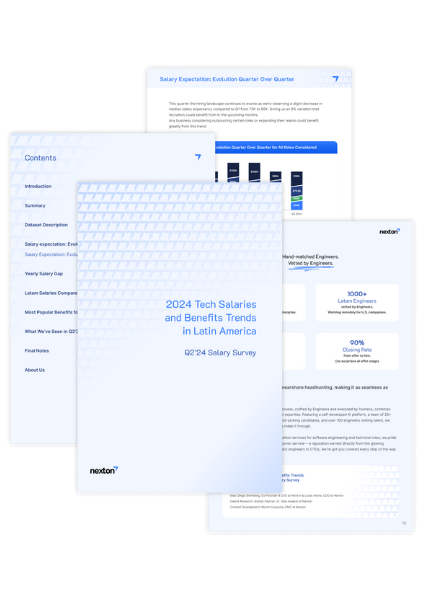Imagine this: You’ve just hired a new engineer. Their resume was stellar, their technical skills impressive, and they aced the interview. But a few weeks in, it becomes clear they’re not the right fit. Projects are delayed, team morale is sinking, and you’re left wondering where it all went wrong.
This scenario is more common than you might think—and it’s costly. A bad hire doesn’t just drain your budget; it impacts your team’s productivity, culture, and even your company’s reputation. The good news? Precision vetting can help you avoid this nightmare altogether.
In this blog, we’ll break down the true cost of a bad hire, explore why precision vetting is the ultimate solution, and highlight why LATAM engineers are a smart choice for your team. Let’s dive in.
The True Cost of a Bad Hire
It’s Not Just About the Money
When we talk about the cost of a bad hire, the first thing that comes to mind is money—and for good reason. According to the U.S. Department of Labor, a bad hire can cost up to 30% of the employee’s annual salary. But the financial impact is just the tip of the iceberg.
- Recruitment Costs: From job postings to recruiter fees, finding a new hire isn’t cheap.
- Onboarding and Training: Investing time and resources into a new employee only to see them leave is a double blow.
- Lost Productivity: A mismatched hire can slow down projects, miss deadlines, and create bottlenecks.
- Team Morale: A bad hire can disrupt team dynamics, leading to frustration and even turnover among your top performers.
The Ripple Effect of a Poor Fit
Let’s say you hire an engineer who struggles to collaborate or communicate effectively. This doesn’t just affect their individual performance—it creates a ripple effect across the entire team.
- Missed Deadlines: A single weak link can delay entire projects.
- Cultural Erosion: Toxic behavior or poor work ethic can damage your company culture.
- Reputation Risk: If the bad hire interacts with clients or partners, it could harm your company’s reputation.
The bottom line? A bad hire is like a pebble thrown into a pond—the ripples spread far and wide.
Why Precision Vetting is the Solution
What is Precision Vetting?
Precision vetting is a thorough, human-led process that evaluates both hard and soft skills to ensure a candidate is the right fit for your team. Unlike AI-driven tools, which can miss nuances, precision vetting combines technical assessments with real human insight.
- Hard Skills: Technical expertise, problem-solving abilities, and relevant experience.
- Soft Skills: Communication, teamwork, adaptability, and cultural fit.
The Nexton Difference
At Nexton, we take precision vetting to the next level. Why? Because we’re engineers vetting engineers. Our process goes beyond resumes and coding tests—we evaluate candidates through a human lens, ensuring they’re not just technically skilled but also a great cultural fit.
- Human Connection: We believe in the power of human interaction to assess soft skills.
- Holistic Evaluation: We look at the whole candidate, not just their technical abilities.
Why LATAM Engineers Are a Great Fit
The Rise of Nearshore Hiring
In recent years, LATAM engineers have become a go-to choice for companies looking to build remote teams. Here’s why:
- Time Zone Alignment: LATAM engineers work in similar time zones to the U.S., making collaboration seamless.
- Cultural Affinity: Shared cultural values and work ethics foster better teamwork.
- Cost-Effectiveness: You get top-tier talent at competitive rates.
According to a recent report, LATAM tech talent hiring has grown by 40% in the last two years, and with precision vetting, you can ensure these hires are a perfect fit for your team.
Common Misconceptions About Hiring and Vetting
AI Vetting vs. Human Expertise
One common misconception is that AI can fully replace human judgment in vetting. While AI tools are great for screening resumes, they often miss the nuances of soft skills and cultural fit.
- AI Limitations: AI can’t gauge how well a candidate will collaborate or adapt to your company culture.
- Human Advantage: Human vetting ensures a holistic evaluation, combining technical skills with interpersonal qualities.
Is Nearshore Hiring Risky?
Another myth is that hiring from LATAM is risky or unreliable. In reality, with precision vetting, you can mitigate these concerns and tap into a pool of highly skilled, motivated engineers.
Conclusion
The cost of a bad hire goes far beyond dollars and cents—it impacts your team’s productivity, culture, and long-term success. Precision vetting is the key to avoiding these pitfalls, ensuring you hire candidates who are not just skilled but also the right fit for your team.
And when it comes to nearshore hiring, LATAM engineers are a smart choice. With the right vetting process, you can build a remote team that’s aligned, collaborative, and high-performing.
Ready to find the perfect fit for your team? Connect with Nexton to learn more about our precision vetting process.


